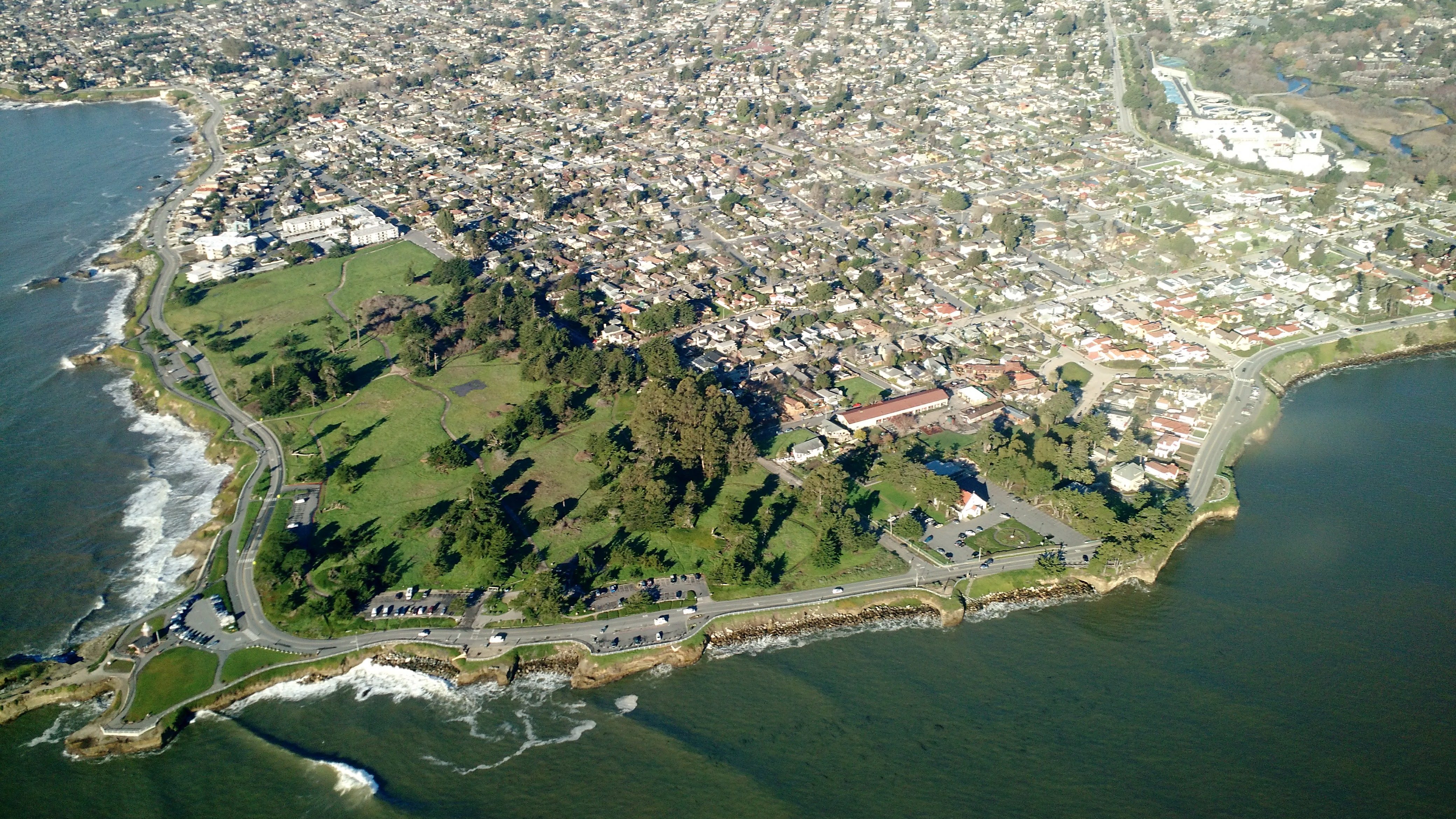Editor’s note: This resource page is part of Santa Cruz Local’s Guide to Local Government. Read an introduction and view all the pages.

Westside Santa Cruz from the air. (Kara Meyberg Guzman—Santa Cruz Local file, flight courtesy of LightHawk)
Santa Cruz County’s mild climate, beaches, forests, entertainment and close community ties have been some of the draws for visitors and residents. Its popularity also has made it one of the least affordable places in the world to live — based on the area’s median income and the median home price. At least 40% of renters spend half of their income or more on housing, according to a UC Santa Cruz study.
Demand for homes with a lack of housing supply — as well as job growth with a lack of higher-paying jobs — all have combined to get us here. Like much of the rest of California, widespread single-family zoning and redlining also factored into who could own homes and where in the county.
Housing decisions in the 1970s and 80s also aimed to protect Santa Cruz County from runaway growth. In the mid-1970s, Santa Cruz County’s population was growing at more than 4% annually.
“Silicon Valley was coming into its maturity, and there was an enormous growth pressure being placed on Santa Cruz County to become in essence a bedroom community for Silicon Valley,” said Fred Keeley. Keeley is a former Santa Cruz County supervisor and former state assemblymember.
The city of Santa Cruz was considering an expansion of its boundaries nearly to Davenport. Pacific Gas & Electric Co. had a nuclear power plant in the works on the North Coast. There was a controversial convention center planned for Lighthouse Field in Santa Cruz. The convention center “became the iconic representation of, ‘Do we or don’t we want to be in control of our own destiny?’” Keeley said.
In 1978, Santa Cruz County voters approved Measure J. It aimed to preserve farmland, concentrate growth in more urban areas and try to add to affordable housing.
Measure J:
- Created an urban services boundary where the county would not build more sewer lines and inhibit the growth of gas and water lines.
- It tried to limit annual population growth to 2% by restricting building permits in unincorporated areas.
- It set aside 15% of new homes for affordable housing in unincorporated county areas. In part because of weak requirements, only about 500 deed-restricted homes have been built under Measure J.
“There needs to be a balance between the amount of growth that occurs, the affordability of that residential growth, and the ability for the infrastructure to support that growth — whether it’s water, sewer or roads,” said Andy Schiffrin. Schiffrin helped Santa Cruz County Supervisor Gary Patton write Measure J. “Those things have to be factored into it so that we don’t end up with a community that has a lot of housing but nobody wants to live here because it’s not pleasant.”
Schiffrin said it wasn’t just Measure J, but the will of residents and elected officials that helped limit housing growth.
Measure J succeeded in preserving farmland in many parts of the county. In the San Lorenzo Valley, people could legally build homes on properties despite a lack of sewer lines, so they built with septic systems.
“We have a lot of people living in the mountains because of decisions in the 1980s and because of the county service line,” said Jason Hoppin, a Santa Cruz County spokesman. Some problems with septic systems have led to water pollution, but tighter regulations and technology have helped improve the situation in recent years, Keeley said.
Although areas of single-family homes were built in places like Aptos and Soquel, sidewalks often weren’t part of the package.
